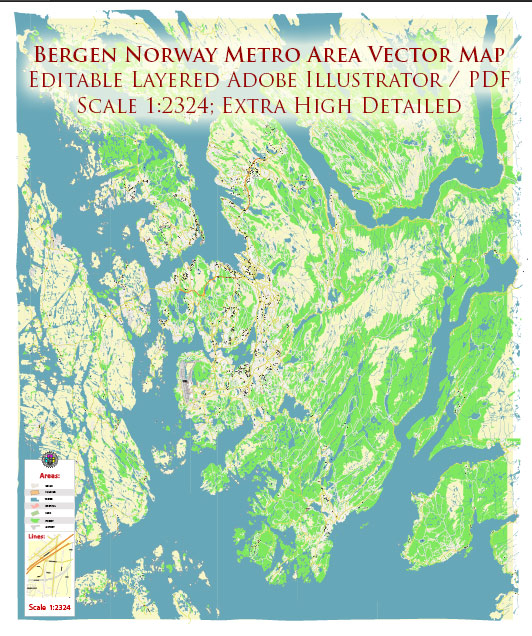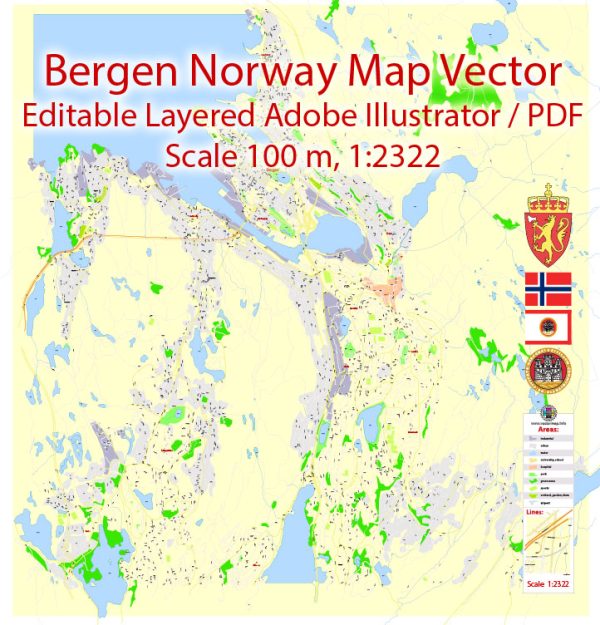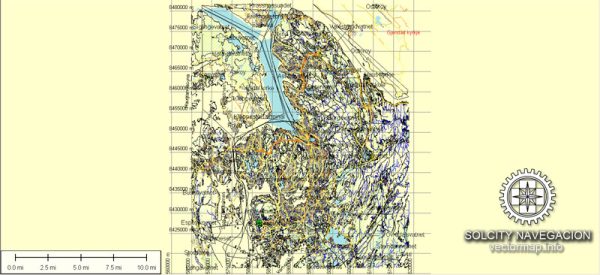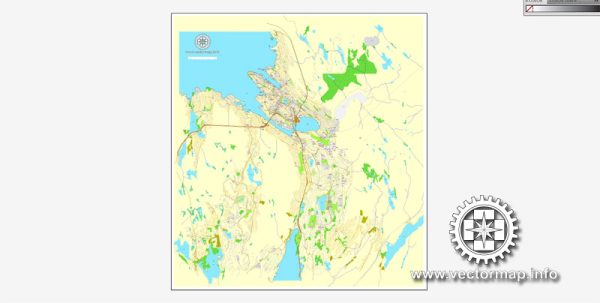Bergen, Norway, has a rich history of urban development that dates back to the early Middle Ages. Here’s a description of the city’s urban development throughout its history:
- Medieval Roots (12th-13th centuries): Bergen was founded in the late 11th century and quickly grew into an important trading hub during the 12th and 13th centuries. The city’s location on the western coast of Norway made it a natural center for trade, with merchants and ships from all over Europe visiting its harbor. Wooden buildings and warehouses were constructed along the waterfront, and Bergen became a vital part of the Hanseatic League, a trading network that linked Northern Europe. The Bryggen district, a UNESCO World Heritage site, is a prime example of the medieval architecture that still stands today.
- The Hanseatic Period (14th-17th centuries): Bergen’s prominence as a trading city continued throughout the Hanseatic period, which lasted for several centuries. The German Hanseatic merchants established a trading post in Bergen during the late Middle Ages, and their presence significantly influenced the city’s development. The Bryggen district, with its iconic colorful buildings, is a well-preserved relic of this era. The Hanseatic Museum provides a glimpse into the life of these merchants.
- Fires and Rebuilding (18th-19th centuries): Bergen faced several devastating fires in its history, notably in the 18th and 19th centuries, which destroyed significant portions of the city. As a result, urban planning and rebuilding efforts took place, leading to the construction of new streets and buildings. The city expanded beyond the Bryggen area, and you can still find historical architecture from this period in parts of Bergen.
- Industrialization and Modernization (19th-20th centuries): The 19th century saw the growth of Bergen’s industrial and maritime sectors. The city’s economy diversified beyond the Hanseatic trade, with shipbuilding, fishing, and manufacturing becoming important industries. Infrastructure development, including the Bergen Railway and modern port facilities, further contributed to the city’s development.
- Contemporary Urban Development: Bergen continued to evolve throughout the 20th century and into the 21st century. The city underwent urban renewal and expansion, with modern buildings and infrastructure projects, including the Bergen Light Rail, enhancing its connectivity and quality of life. Today, Bergen is known for its mix of historical and contemporary architecture, with vibrant cultural institutions and a strong focus on sustainability and environmental preservation.
Bergen’s rich history of urban development has left a lasting imprint on the city’s character, with a blend of medieval charm and modern amenities. Its maritime heritage, cultural significance, and beautiful natural surroundings make it a unique and captivating place to explore and learn about Norway’s history.





 Author: Kirill Shrayber, Ph.D.
Author: Kirill Shrayber, Ph.D.